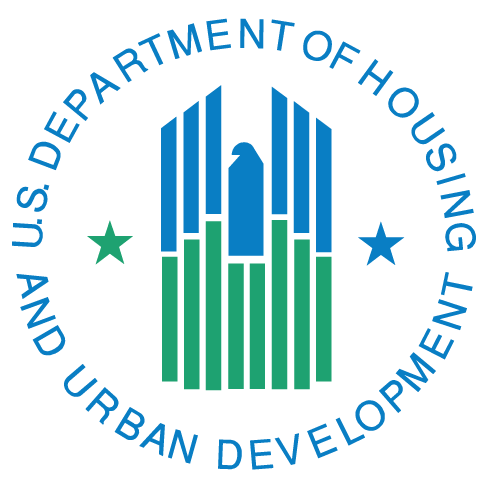HUD Publishes Energy Benchmarking Notices
Oct 11, 2016
 HUD issued two notices regarding energy benchmarking reporting, one for HUD-assisted or HUD-insured private multifamily housing (Multifamily), and one for public housing. Utility benchmarking involves tracking the utility consumption of a development on an ongoing basis, calculating the energy and water efficiency of the development, and comparing its efficiency to similar developments. Utility benchmarking helps property owners understand their buildings’ energy and water performance, allowing them to detect malfunctioning equipment and billing errors, prioritize operational and capital improvements, verify the return on investments, and plan future budget needs.
HUD issued two notices regarding energy benchmarking reporting, one for HUD-assisted or HUD-insured private multifamily housing (Multifamily), and one for public housing. Utility benchmarking involves tracking the utility consumption of a development on an ongoing basis, calculating the energy and water efficiency of the development, and comparing its efficiency to similar developments. Utility benchmarking helps property owners understand their buildings’ energy and water performance, allowing them to detect malfunctioning equipment and billing errors, prioritize operational and capital improvements, verify the return on investments, and plan future budget needs.
For both Multifamily housing and public housing, HUD is proposing to apply benchmarking information collection requirements only to properties that have existed for at least 12 months and that have 21 or more housing units.
HUD’s Office of Multifamily Housing Programs is proposing to require energy benchmarking reporting for properties with Housing Assistance Payment contracts, Project Rental Assistance Contracts, or Multifamily properties that are already or about to be insured by the Federal Housing Administration (FHA). Covered Multifamily properties include:
- Section 8 Housing Assistance Payment (HAP) contracts,
- Section 202 Project Rental Assistance Contracts (PRAC),
- Section 811 PRAC and Project Rental Assistance (PRA) contracts,
- Section 202/162 Project Assistance Contracts (PAC),
- Section 202 Senior Preservation Rental Assistance Contracts (SPRAC), and
- Multifamily Housing properties insured under Sections 223(a)(7), 223(f), 221(d)(3) 221(d)(4), 220, 231, 236, and 241(a).
HUD will require owners of the above properties to submit benchmarking information on the following schedule:
- For HUD-assisted properties with a utility allowance: at the time of a triennial utility allowance baseline calculation;
- For HUD-assisted properties where there is no utility allowance: every third year at the time of financial statement submission;
- Prior to issuance of new FHA mortgage insurance under Sections 223(a)(7), 223(f), and 241(a);
- With a Capital Needs Assessment submission required by the Office of Asset Management and Portfolio Oversight in HUD’s Office of Multifamily Housing Programs on a 10-year cycle; and
- With a Capital Needs Assessment submission required as part of any enforcement action.
HUD also encourages owners of covered properties to voluntarily submit water and energy benchmarking data to HUD on an annual basis. The Office of Multifamily Housing Programs will accept metrics calculated using either whole building data or a combination of whole owner-paid utility data and sampled tenant-paid utility data.
For public housing agencies (PHAs), HUD is proposing that those PHAs operating 250 or more public housing units under an Annual Contributions Contract (ACC) use the Environmental Protection Agency’s (EPA) ENERGY STAR Portfolio Manager program to benchmark all properties no less than every 3 years and report the automatically generated metrics to HUD beginning no later than 2018. ACC units in buildings that have converted or will convert to 100% Project Based Vouchers (PBVs) through the Rental Assistance Demonstration (RAD) will also be required to benchmark. These PHAs are encouraged to voluntarily submit benchmarking data to HUD annually. Smaller PHAs are also encouraged to benchmark and submit the requested metrics.
Most benchmarking requirements utilize the ENERGY STAR Portfolio Manager, which automatically calculates energy performance metrics, including a benchmarking score for public housing properties. ENERGY STAR benchmarking scores range from 0 to 100. Properties that achieve a score of at least 75 points may be eligible for ENERGY STAR certification. It is anticipated that EPA’s ENERGY STAR program will release a similar benchmark score for water consumption in approximately one year.
Utility costs (energy and water) account for approximately 22% of public housing operating budgets and a similar proportion across the Multifamily assisted-housing sector. HUD spends an estimated $6.4 billion annually to cover the costs of utilities in its public and assisted housing programs. Based on an analysis of more than 35,000 buildings covered by newly established local energy benchmarking laws, the EPA found an average energy use reduction of 7% between 2008 and 2011. Investments in energy and water efficiency can improve occupant comfort, reduce tenant turnover, stabilize operating costs, preserve affordable housing, ensure disaster resilience, and mitigate climate change.
The Multifamily Federal Register notice is at: http://bit.ly/2dyxJNU
The public housing Federal Register notice is at: http://bit.ly/2dt1Pqd